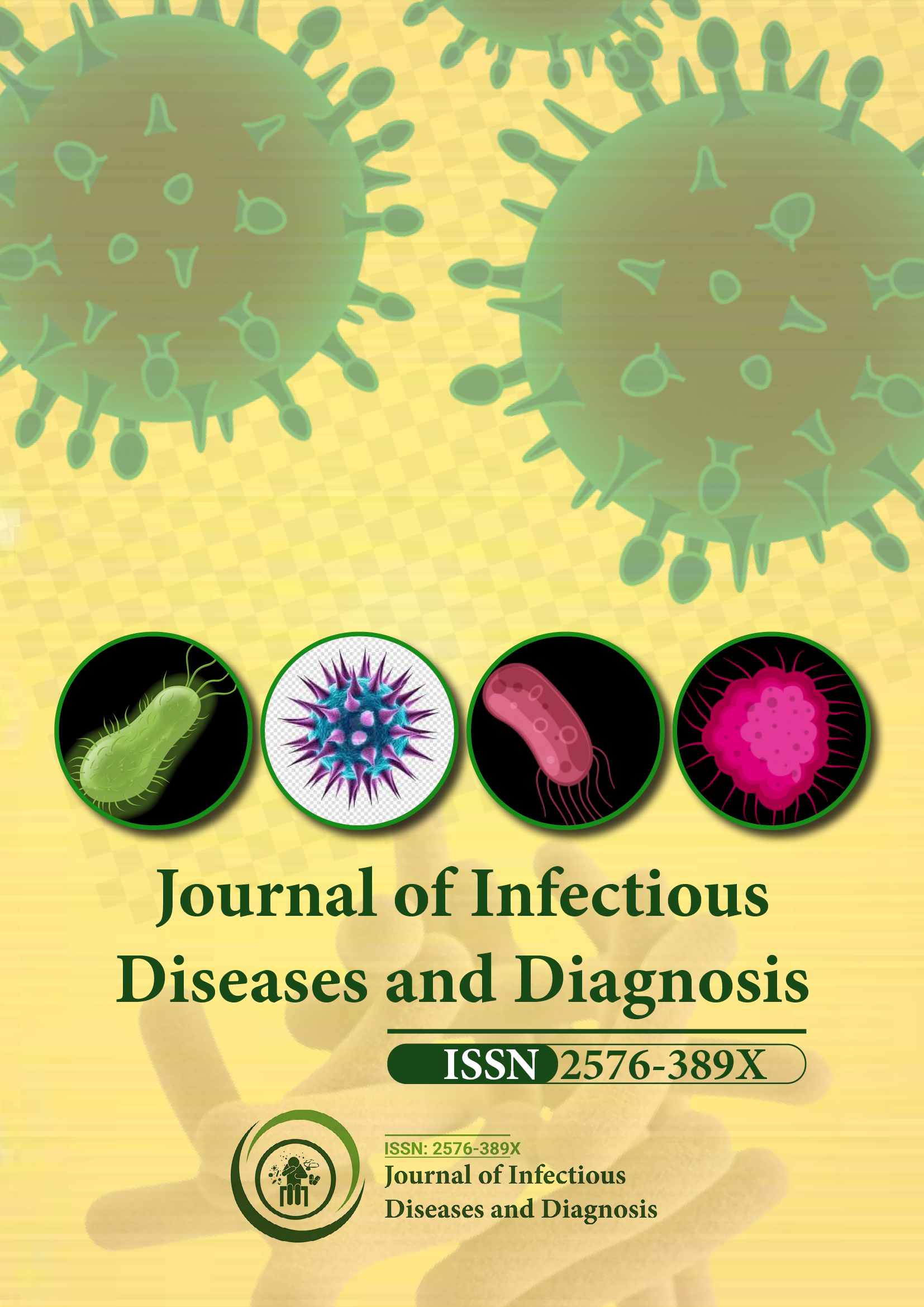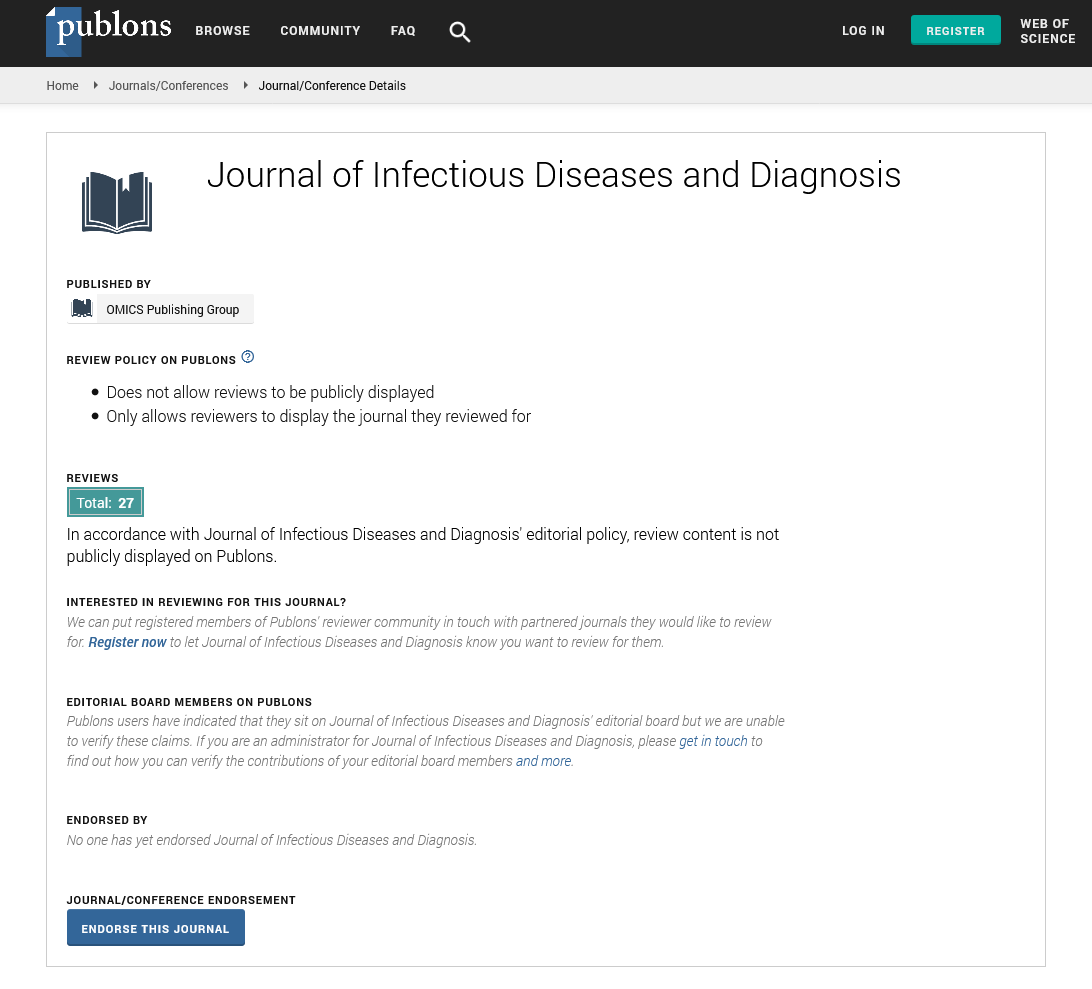Indexed In
- RefSeek
- Hamdard University
- EBSCO A-Z
- Publons
- Euro Pub
- Google Scholar
Useful Links
Share This Page
Journal Flyer

Open Access Journals
- Agri and Aquaculture
- Biochemistry
- Bioinformatics & Systems Biology
- Business & Management
- Chemistry
- Clinical Sciences
- Engineering
- Food & Nutrition
- General Science
- Genetics & Molecular Biology
- Immunology & Microbiology
- Medical Sciences
- Neuroscience & Psychology
- Nursing & Health Care
- Pharmaceutical Sciences
Perspective - (2024) Volume 9, Issue 1
Immunodiagnostic Advances: Controlling the Power of Antibodies in Disease Detection
Luisa Sophie*Received: 02-Jan-2024, Manuscript No. JIDD-24-24768; Editor assigned: 04-Jan-2024, Pre QC No. JIDD-24-24768 (PQ); Reviewed: 19-Jan-2024, QC No. JIDD-24-24768; Revised: 26-Jan-2024, Manuscript No. JIDD-24-24768 (R); Published: 02-Feb-2024, DOI: 10.35248/2576-389X.24.09.255
About the Study
In the dynamic landscape of diagnostic technologies, immunodiagnostic advances have emerged as a transformative force, leveraging the remarkable specificity of antibodies for precise disease detection. The utilization of antibodies as molecular probes has prepared for a diverse range of diagnostic assays, contributing to the evolution of personalized and targeted medicine. This commentary explores into the innovative strides made in controlling the power of antibodies and their pivotal role in revolutionizing disease detection.
At the core of immunodiagnostic advances lies the unique ability of antibodies to recognize and bind with high specificity to target antigens. This fundamental property has been controlled to develops an abundance of of diagnostic assays, each designed to detect specific diseases or biomarkers. Enzyme-Linked Immunosorbent Assay (ELISA) stands out as a classic example of this approach. In ELISA, antibodies are immobilized on a solid surface and utilized to capture and detect specific antigens present in a patient's sample. This technology has become a fundamental in clinical laboratories, enabling the detection of various diseases ranging from infectious agents to autoimmune disorders.
Monoclonal antibodies, produced through advancements in biotechnology, have further elevated the precision of immunodiagnostic assays. These laboratory-engineered antibodies exhibit a remarkable level of specificity, allowing for the development of highly sensitive tests. Monoclonal antibody-based assays have become integral in the detection of specific cancer markers, infectious agents, and autoimmune diseases. The specified nature of these antibodies enhances the accuracy of diagnostic results, facilitating early disease detection and intervention.
Immunofluorescence assays represent another category of immunodiagnostic advances, offering a visual and quantitative approach to disease detection. In these assays, antibodies labeled with fluorophores bind to specific antigens, producing a fluorescent signal. This technique allows for the visualization of cellular or subcellular structures under a microscope, aiding in the identification of disease-related changes. Immunofluorescence has become instrumental in the diagnosis of conditions such as autoimmune disorders and certain infectious diseases.
The evolution of lateral flow assays exemplifies the portability and simplicity achievable through immunodiagnostic approaches. Often referred to as "rapid tests" or "strip tests, “these assays utilize antibodies to capture target antigens and generate visible signals, obviating the need for sophisticated laboratory equipment. Pregnancy tests, infectious disease screening, and drug tests are among the countless applications of lateral flow assays, showcasing their potential for decentralized and point-ofcare diagnostics.
Recent advances in immunodiagnostics extend beyond traditional antibody-antigen interactions, encompassing novel platforms such as immune-based sensors and biosensors. These technologies integrate antibodies with advanced sensing mechanisms to detect the presence of specific molecules, allowing for real-time and continuous monitoring. Immunosensors have shown potential in applications such as glucose monitoring for diabetes and the detection of cancer biomarkers, demonstrating the versatility of antibody-based diagnostics in the area of personalized medicine.
Antibody-based diagnostics have also played a pivotal role in the response to infectious disease outbreaks. Serological tests, which detect antibodies produced by the immune system in response to an infection, have been important in determining the prevalence of diseases within populations. Antibody tests for viruses like HIV, Hepatitis, and, more recently, SARS-CoV-2, have been instrumental in understanding the spread of infections and assessing immunity levels. These tests contribute valuable epidemiological data, aiding public health efforts in controlling and managing outbreaks.
The application of antibodies in diagnostic imaging, known as immunoscintigraphy, represents a convergence of immunodiagnostics with medical imaging technologies. In this approach, radioactive isotopes tagged to antibodies are used to visualize specific targets within the body. Immunoscintigraphy has proven valuable in cancer diagnostics, allowing for the precise localization of tumors and the monitoring of therapeutic responses. This fusion of immunodiagnostics with imaging techniques contributes to a more comprehensive understanding of disease dynamics.
Despite these remarkable strides, challenges persist in the area of immunodiagnostic advances. False positives and false negatives, cross-reactivity, and the potential for variability in antibody production are factors that demand ongoing attention. Standardization of assays, quality control measures, and rigorous validation are imperative to ensure the reliability and reproducibility of immunodiagnostic tests. The evolving field of point-of-care diagnostics, where simplicity and speed are paramount, requires a delicate balance between accessibility and accuracy.
Conclusion
In conclusion, the controlling of antibodies in immunodiagnostic advances represents a change in opinion of precision and specificity in disease detection. From traditional ELISA assays to advanced immunosensors, the versatility of antibodies as molecular tools has propelled diagnostic technologies into new frontiers. The synergy between biotechnology, immunology, and diagnostics continues to unfold, innovative approaches for personalized medicine, rapid testing, and improved disease monitoring. As these advances become increasingly integrated into clinical practice, the impact on patient care and public health is poised to be profound. The field of immunodiagnostics is still developing, but it is beginning to show how the strength of antibodies may change the field of illness detection in the future.
Citation: Sophie L (2024) Immunodiagnostic Advances: Controlling the Power of Antibodies in Disease Detection. J Infect Dis Diagn. 9:255.
Copyright: © 2024 Sophie L. This is an open-access article distributed under the terms of the Creative Commons Attribution License, which permits unrestricted use, distribution, and reproduction in any medium, provided the original author and source are credited.

